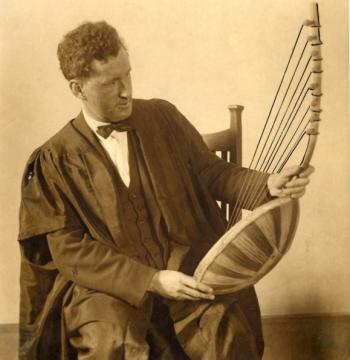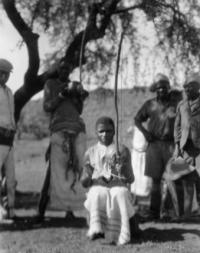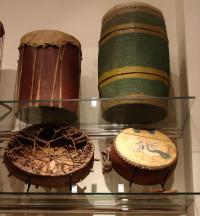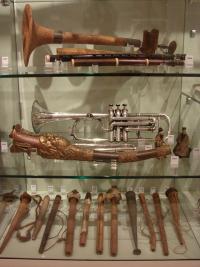Posted on October 27, 2010

In 1934 Kirby's magnum opus, The Musical Instruments of the Native Races of South Africa, was published by Oxford University Press; the book remains as a major reference on the subject. When Kirby relinquished curatorship of the collection in 1954, he loaned it to the Africana Museum, now Museum Africa, in Johannesburg. Kirby died in 1970, and in the early 1980s the collection was purchased by the University of Cape Town, and housed in the South African College of Music. In 1983 it was opened to the public by Chief Mangosuthu Buthelezi. In 2004, Michael Nixon a senior lecturer in the Ethnomusicology and African Music divisions at the university's South African College of Music took over the collection. He found it in a dismal condition as the rooms it was stored in were damp with most of the collection covered in mould. However, the University had sourced funding from the National Lotteries Distribution Trust Fund, enabling Nixon and his team to embark on a project that was aimed at controlling the climate, fixing the exhibition space, conserving the instruments, making copies of selected instruments for performance, and developing an online catalogue.


The instruments in the Kirby collection, much like all other objects or artefacts that are kept in museums, form part of the colonial archive shaped by the advent of colonialism and also by the various institutions that are concerned with them. The biographies of the collector and the collection, including the methods that Kirby employed in collecting the instruments, his and subsequent curators' perceptions of the people that made and used the instruments make up the subject of Michael Nixon's doctoral research. This then reminded me of concepts introduced by Carolyn Hamilton and Nessa Liebhammer during a panel discussion entitled "ethnologised pasts and their archival futures". Hamilton and Liebhammer, seek to engage dominant theories wherein material objects were excluded from the archive and housed in museums, marking off regulated knowledge from uncontrolled knowledge. They proposed convening of scattered evidence; however, they have found that the museums are immobilised in this regard because of the political distaste for ethnological collections.
The collection activities of curators or of institutions need to be unpacked and this demands inter-institutional collaboration. In writing the biography of collections, one needs to understand that objects shape their contexts the same way that they are shaped by their contexts. The Kirby collection has travelled the country, and other parts of the African continent and the world, and has been shaped and in turn it shaped its various contexts. The objects were literally shaped by those who made them and may have influenced them in return. When the instruments were collected by Kirby during field work, he must have selected them for a particular reason, possibly the aesthetic aspect or may have fed his own curiosity as a researcher at the University of Witwatersrand. It is also said that he collected the objects for teaching purposes and was supported by Carnegie funding in this regard.


The Kirby collection is currently open to the public by appointment, and is available for research and teaching purposes.
Enquiries: Lisa Diamond
Tel: (021)6502626
E-mail: {encode="lisa.diamond@uct.ac.za" title="lisa.diamond@uct.ac.za"}
Xolelwa Kashe-Katiya is the Deputy Director of the Archival Platform